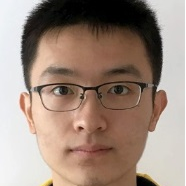Recent Advances in Density Functional Theory and Computational Materials Design
A special issue of Materials (ISSN 1996-1944). This special issue belongs to the section "Materials Simulation and Design".
Deadline for manuscript submissions: closed (20 November 2023) | Viewed by 9404
Special Issue Editors
Interests: 2D materials; excited-state physics; many-body perturbation theory
Special Issue Information
Dear Colleagues,
Nowadays, materials modeling with computational quantum mechanics has become an indispensable component in physics, chemistry and materials science research. Density function theory (DFT) is arguably the most popular and fruitful method for first-principles materials simulations. As the working horse of computational materials science, DFT often serves as a starting point for other first-principles methods, such as density functional perturbation theory, many-body perturbation theory, dynamical mean field theory, etc. With DFT, researchers are able to study a wide range of materials, from molecules to nanodevices to bulk crystals. A lot of physical and chemical properties can be simulated with varying computational cost, such as magnetism, defect formation, carrier dynamics, optical absorption, chemical reaction, etc. Thanks to the efforts of the computational materials community and DFT software developers, improved density functionals and advanced numerical techniques have been helping to increase the predictive power and widen the applicability of the DFT method. Moreover, the fast development of DFT-based methods and high-performance computing techniques has created great opportunities for high-throughput computing and the establishment of computational materials databases. The rise of machine learning over the past decade has also boosted the computational materials design, enhancing both the accuracy and speed for large-scale simulations.
This Special Issue is focused on computational materials design with DFT and DFT-based methods. This field is quickly evolving, and we aim to present the recent advances in computational materials research where exciting new materials and phenomena are investigated by DFT and/or DFT-based methods. We also welcome articles or reviews on high-throughput computing, materials database, as well as the application of machine learning in materials design. It is my pleasure to invite you to submit a manuscript for this Special Issue. Full papers, communications, and reviews are all welcome.
Dr. Meng Wu
Dr. Yalun Yu
Guest Editors
Manuscript Submission Information
Manuscripts should be submitted online at www.mdpi.com by registering and logging in to this website. Once you are registered, click here to go to the submission form. Manuscripts can be submitted until the deadline. All submissions that pass pre-check are peer-reviewed. Accepted papers will be published continuously in the journal (as soon as accepted) and will be listed together on the special issue website. Research articles, review articles as well as short communications are invited. For planned papers, a title and short abstract (about 250 words) can be sent to the Editorial Office for assessment.
Submitted manuscripts should not have been published previously, nor be under consideration for publication elsewhere (except conference proceedings papers). All manuscripts are thoroughly refereed through a single-blind peer-review process. A guide for authors and other relevant information for submission of manuscripts is available on the Instructions for Authors page. Materials is an international peer-reviewed open access semimonthly journal published by MDPI.
Please visit the Instructions for Authors page before submitting a manuscript. The Article Processing Charge (APC) for publication in this open access journal is 2600 CHF (Swiss Francs). Submitted papers should be well formatted and use good English. Authors may use MDPI's English editing service prior to publication or during author revisions.
Keywords
- first-principles calculations
- density functional theory
- electronic structure
- high-throughput computing
- materials database
- machine learning
Benefits of Publishing in a Special Issue
- Ease of navigation: Grouping papers by topic helps scholars navigate broad scope journals more efficiently.
- Greater discoverability: Special Issues support the reach and impact of scientific research. Articles in Special Issues are more discoverable and cited more frequently.
- Expansion of research network: Special Issues facilitate connections among authors, fostering scientific collaborations.
- External promotion: Articles in Special Issues are often promoted through the journal's social media, increasing their visibility.
- Reprint: MDPI Books provides the opportunity to republish successful Special Issues in book format, both online and in print.
Further information on MDPI's Special Issue policies can be found here.







